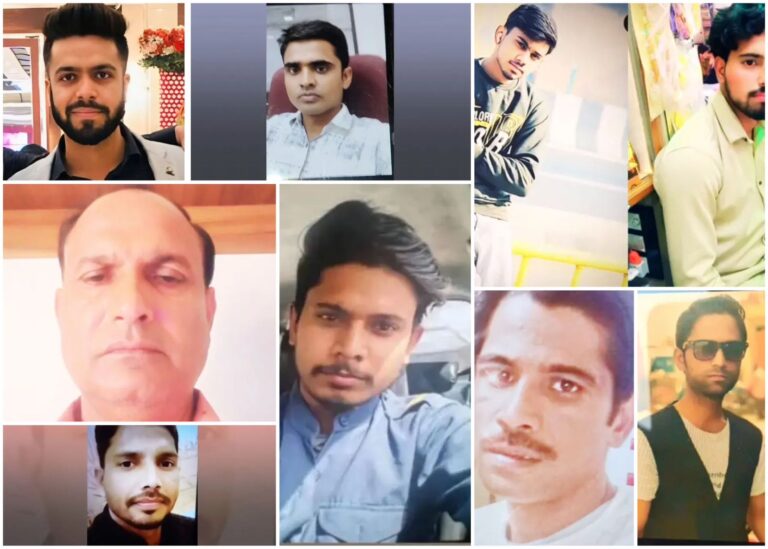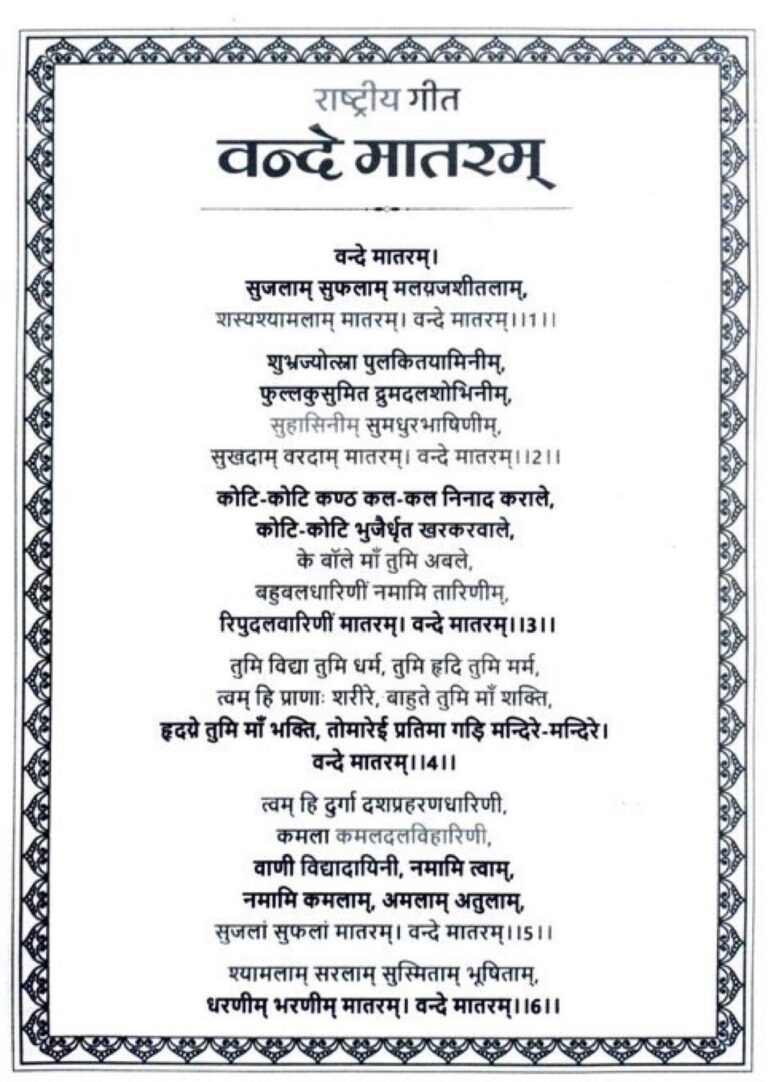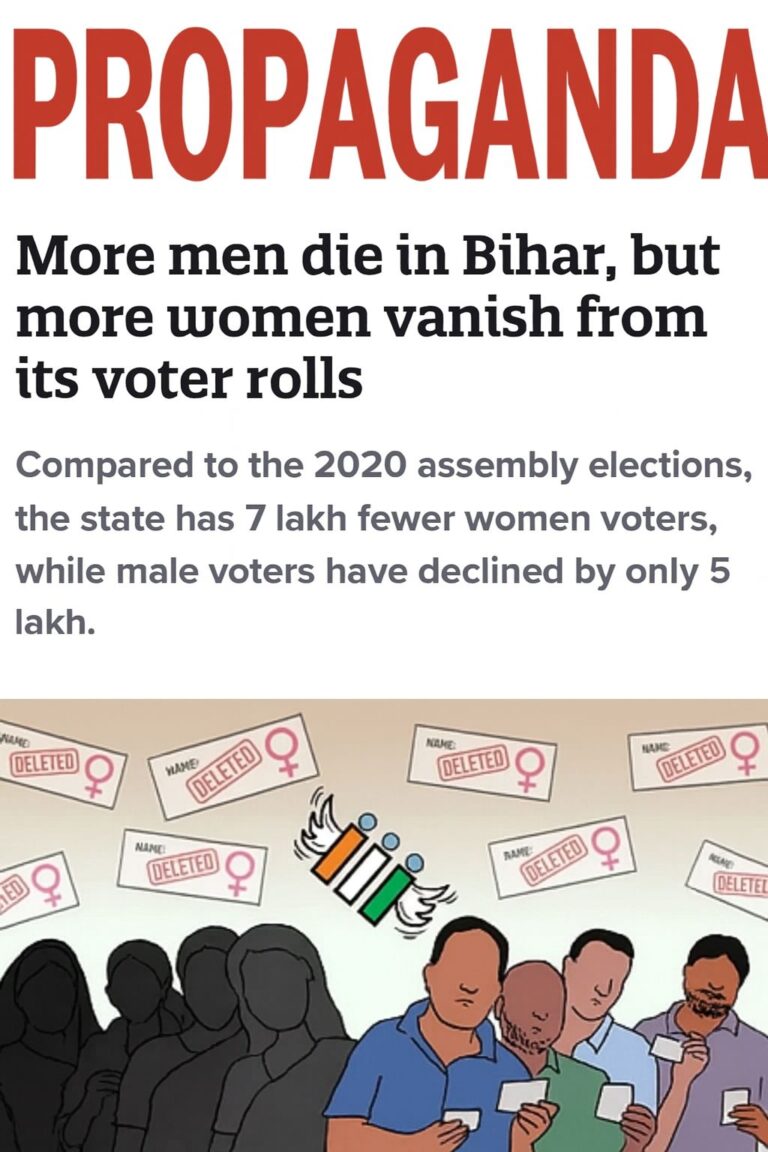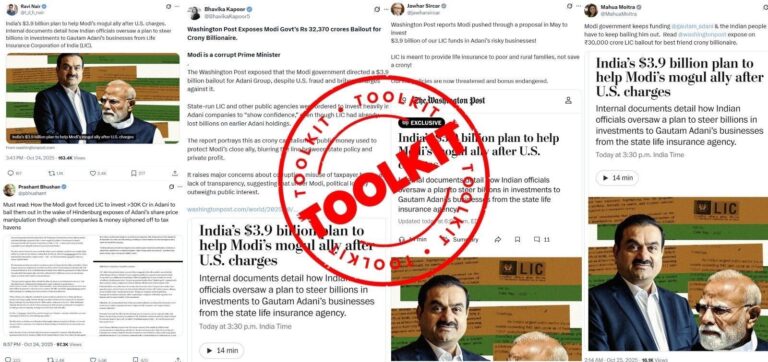Modi’s Leadership: Substance Over Spectacle – A Rebuttal to The Wire’s Hit Piece

Sanjay K. Jha’s latest piece in The Wire, titled “Modi Needs to Deliver: Merely Dressing Up Like a Strong Leader Will Only Evoke Ridicule”, is a classic example of lazy journalism masquerading as political analysis. Jha argues that PM Modi’s projection as a decisive leader is crumbling, relying on symbolic gestures—like the consecration of the Lord Shri Ram Temple and visits to wildlife sanctuaries—to hide an alleged failure in governance. His conclusion? That the prime minister’s attempts at image-building will soon be met with ridicule.
Strong claim. Weak evidence.
Let’s dismantle this argument piece by piece, using data, logic, and a little bit of what Jha’s article lacks—perspective.
The Economy: Failing or Flourishing?
Jha’s primary accusation is that PM Modi has failed to deliver on economic growth and job creation. But the numbers tell a different story.
GDP Growth: India’s GDP under PM Modi has consistently grown at an average of 6-7% annually from 2014-2023, barring the pandemic-hit year of 2020. Compare that to the UPA’s last five years (2009-2014), where GDP growth averaged 6.7%, plummeting to 4.4% in 2013-14 due to policy paralysis. Modi’s leadership saw India overtake the UK in 2022 to become the world’s fifth-largest economy (World Bank).
Manufacturing and Jobs: Unemployment remains a challenge, but ignoring government efforts is misleading. Under Make in India, the manufacturing sector has added 6 million jobs (Ministry of Commerce). PM Mudra Yojana has disbursed 43 crore loans since 2015, supporting small businesses and self-employment. Unemployment, which peaked at 6.1% in 2017-18, has since dropped to 4.1% in 2022-23 (PLFS data).
Poverty Reduction: The NITI Aayog report from 2023 states that 25 crore Indians were lifted out of poverty between 2013-2023. Modi’s welfare schemes, including PM Garib Kalyan Anna Yojana, providing free food grains to 80 crore people, have ensured social security on an unprecedented scale.
Does this sound like a leader merely “dressing up” without delivering?
Lord Shri Ram Temple: Political Gimmick or National Legacy?
Jha mocks PM Modi’s presence at the Lord Shri Ram Temple consecration, calling it a desperate attempt to “shore up Hindu support” ahead of elections.
Let’s get some facts straight:
1. The Lord Shri Ram Temple was not PM Modi’s political stunt—it was the culmination of a decades-long legal battle settled by the Supreme Court in 2019. Construction was a matter of court-mandated justice, not political whim.
2. Public sentiment overwhelmingly supports the temple. BJP’s vote share grew from 31% in 2014 to 37% in 2019, and recent Mood of the Nation polls (India Today, 2024) show that the Lord Shri Ram Temple has only strengthened PM Modi’s popularity, with BJP projected to hit 41% vote share in 2024.
3. Ayodhya’s redevelopment is an economic catalyst, not just symbolism. The Rs. 85,000 crore investment in the city’s infrastructure has positioned it as a major religious tourism hub, driving economic benefits to locals.
Mocking the temple’s impact is not just tone-deaf—it’s intellectually dishonest.
Crisis Management: Selective Criticism
Jha accuses PM Modi of being absent in times of crisis, specifically referencing the Manipur violence and the farmers’ protests.
Manipur Violence: The government deployed additional security forces and initiated high-level peace talks. The situation was undeniably severe, but governance happens in war rooms, not Twitter hashtags.
Farmers’ Protests: PM Modi’s government held 11 rounds of negotiations with farmer groups, leading to the repeal of the three contentious laws. A rigid government wouldn’t have backed down; a responsive one did.
Jha’s critique is simplistic—real governance isn’t measured by how often a leader appears at protest sites but by the actions taken to resolve issues.
Foreign Policy: Weakness or Masterstroke?
Jha claims PM Modi’s foreign policy is all optics, citing India’s neutral stance on Russia’s Ukraine invasion as an example of indecisiveness.
India’s energy security first: PM Modi’s decision to continue oil imports from Russia, totaling $46 billion in 2022-23, saved India billions in fuel costs while maintaining diplomatic balance.
Strategic autonomy: At the 2022 SCO summit, PM Modi bluntly told Putin, “This isn’t an era of war”, a statement that grabbed global attention.
G20 Presidency Success: PM Modi brokered consensus at the G20 summit despite deep global divisions—an achievement even Western leaders acknowledged.
Is this weakness, or is Jha simply struggling to acknowledge that PM Modi’s foreign policy prioritizes India’s interests over Western validation?
Ridicule? The Numbers Disagree
Jha’s grand conclusion is that PM Modi’s image-building will soon “evoke ridicule.” But ridicule doesn’t seem to be coming from the people—it’s coming from elite media circles disconnected from ground realities.
PM Modi’s approval ratings (Morning Consult, Feb 2024) remain at 70%, making him one of the world’s most popular leaders.
Rural wages have risen 6.9% annually under PM Modi (PLFS data).
India’s global economic clout is rising, with the IMF projecting India to be the fastest-growing major economy in 2024.
The ridicule Jha predicts is wishful thinking, not grounded analysis.
Final Verdict: Jha’s Article Is a Political Rant, Not Serious Analysis
Jha’s piece reads less like a factual critique and more like the grumbling of an old-school columnist unwilling to acknowledge political shifts. His argument—that PM Modi is relying on spectacle over substance—collapses under the weight of data.
India’s economy is stronger than ever.
PM Modi’s welfare schemes are lifting millions out of poverty.
Foreign policy decisions are strategic, not reactionary.
The Lord Shri Ram Temple is both a political and economic win.
Is PM Modi’s governance flawless? Of course not. But to claim that he is all optics and no delivery is not just incorrect—it’s laughable. If anything, the only ridicule here is reserved for those who mistake their personal disdain for public sentiment.
Sorry, Jha. The numbers don’t lie—but your analysis certainly does.
Disclaimer: The data and statistics mentioned in this article are sourced from publicly available information on the internet, government reports, and media portals. Readers are encouraged to verify details independently.
Author : Sandeep Gandotra, is a serial entrepreneur, startup founder, social media influencer and political analyst with 25 years of overall experience. Tweets at Sandeep Gandotra





